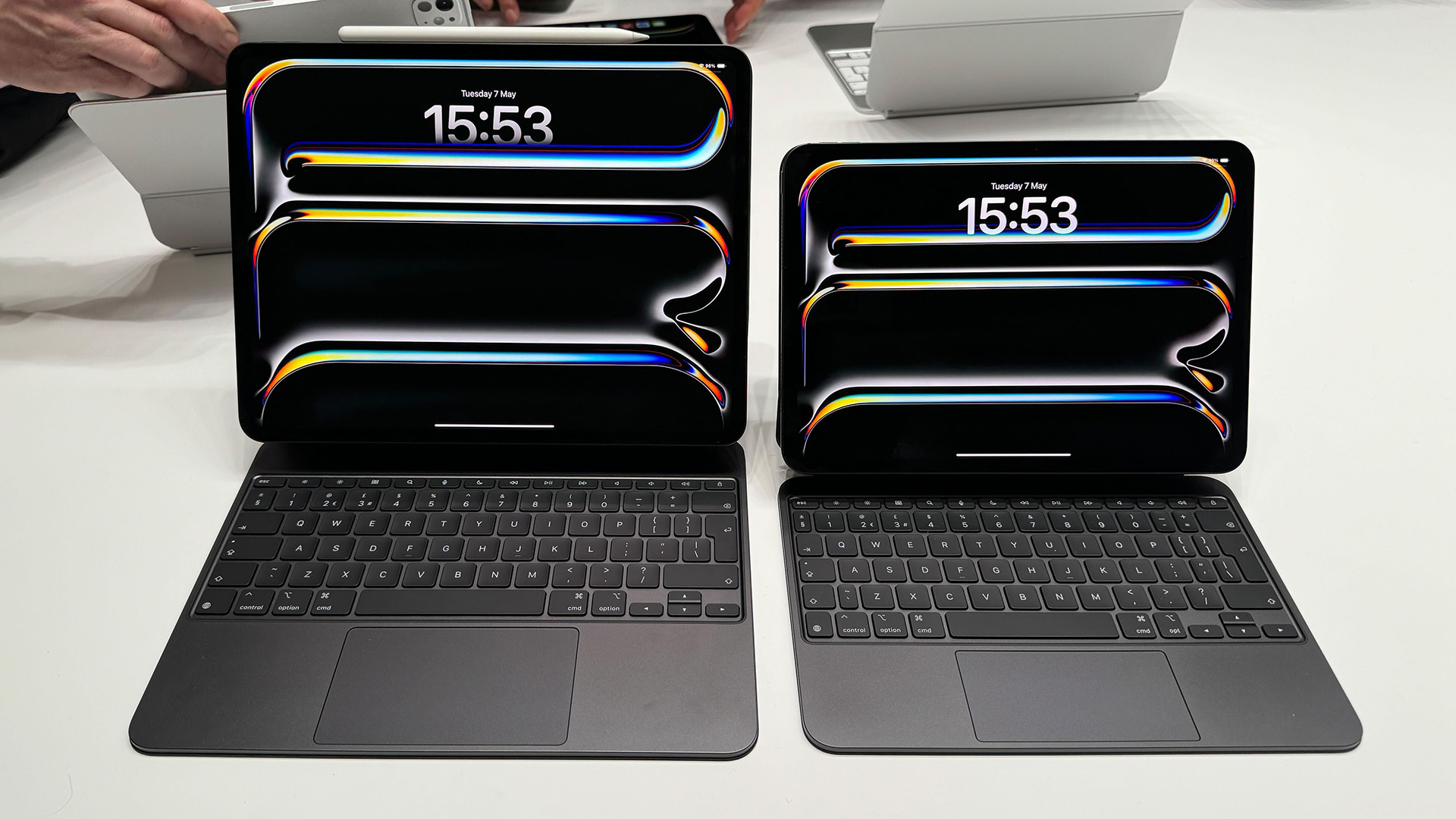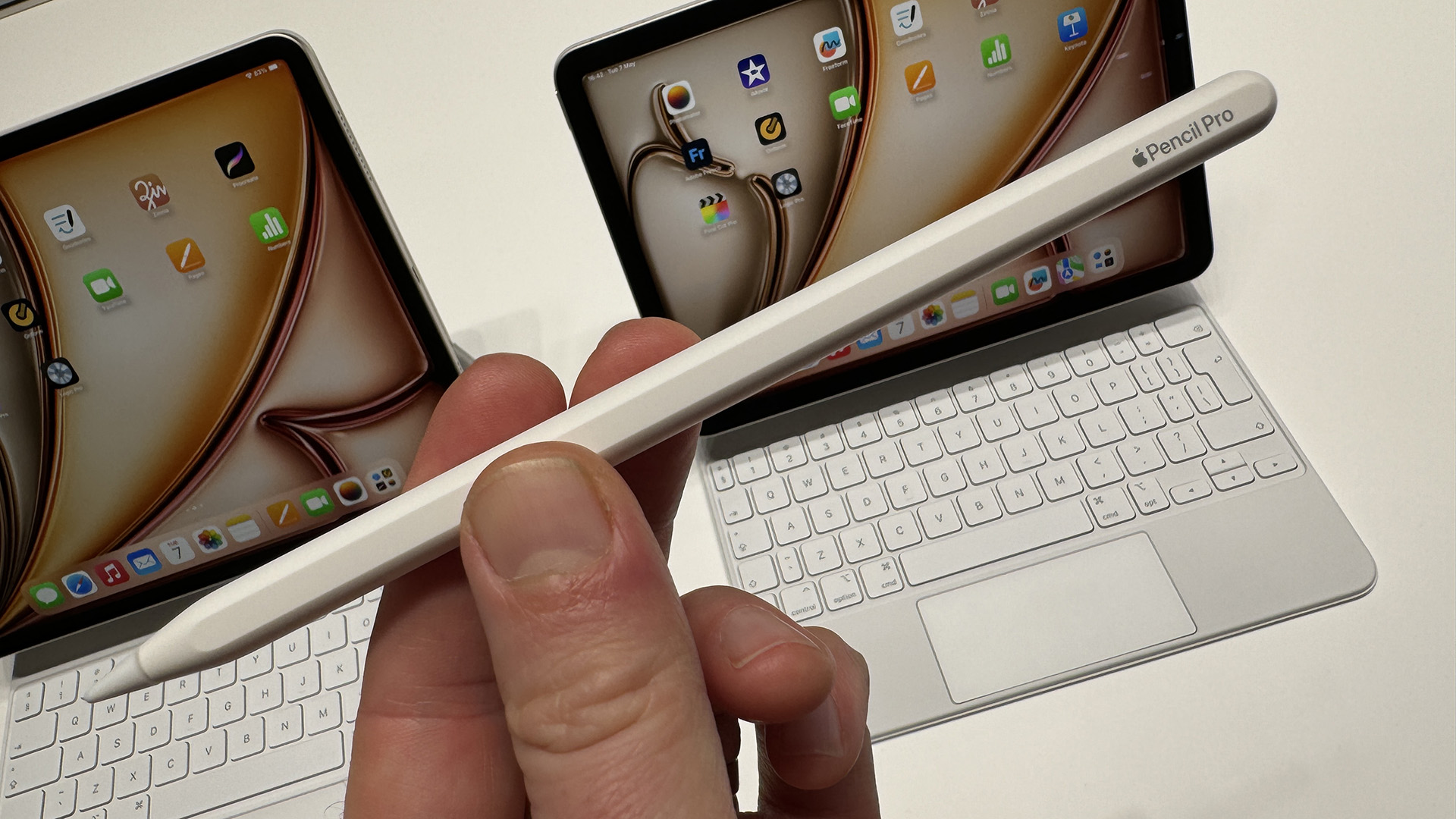Does the new iPad Pro prove that laptops are dead?
With a 13-inch tandem OLED screen, M4 chip and new Magic Keyboard, the iPad Pro is more than a laptop


How can you better the iPad Pro? It was already way beyond any other tablet on the market, and yet this week it got a major revamp. The larger iPad Pro model is now 13 inches rather than 12.9, with an OLED display and is powered by an incredible new M4 chip, to replace the previous M2 chip. Plus, there’s a new Magic Keyboard, making the experience even more Mac-like. So, could it replace a laptop? This time I think it really could.
The idea of a tablet replacing a laptop has been part of the conversation since the first generation of iPads back in 2010. However, what I saw today takes them not just to the level of basic laptops, but to a similar spec as some MacBook Pros. The M4 chip supersedes the M2 chip in the older model, and in theory, is faster than the standard M3 chip that features in both the latest MacBook Air and MacBook Pro models. High-spec M3 Pro and M3 Max models remain superior though.
The new iPad Air runs the same M2 chip as the older iPad Pros, which is also still available in the base-level MacBook Air models. The latest additions to the MacBook Air range run the newer M3 chip.
The MacBooks also have the benefit of the MacOS, which offers more flexibility than the iPadOS. However, I suspect we will see an even more laptop-esque interface in iPadOS 18, when it's revealed at WWDC in June.

The new 11-inch and 13-inch iPad Air
Seeing is believing
Processing power is only part of the argument though – the iPad Pro is all about display. The larger model has increased in size from 12.9 inches to 13 inches and moved from a Mini-LED to an OLED display. This is what Apple calls an Ultra Retina XDR display, using Tandem OLED technology – presumably doubling up on those OLEDs. Not only is this display brighter, with up to 1600 nits peak, but it offers more detail in the shadows. Having seen it for myself, I can confirm it's really impressive.
One optional feature for the screen is a new nano-texture glass coating that gives a matte-like finish to reduce glare. Much like the option available on Apple’s Studio monitor and Pro XDR monitor, this is designed for those using the device for colour-sensitive editing, and gives the images an even more lifelike feel.
While not OLED, the new 13-inch iPad Air provides an LED-backlit Liquid Retina display, which is both brighter and higher resolution than the 13-inch display on the MacBook Air.
Get all the latest news, reviews, deals and buying guides on gorgeous tech, home and active products from the T3 experts
An obvious benefit of tablets is the size and weight of the devices. The new iPad Pro is both thinner and lighter than the previous model, making it even easier to transport and hold. The 11-inch model is now 5.3mm in depth, while the 13-inch model is even thinner at 5.1mm. In terms of weight, the 11-inch now weighs just under one pound (446g) and the 13-inch weighs 1.28 lbs (582g). Even with the added keyboard, this is less than your average laptop.
There’s a new Magic Keyboard for the iPad Pro, too. The new model sees a new larger touchpad, with haptic feedback and a row of function keys about the number keys – all making it closer to that MacBook experience.

The power of the pencil
Perhaps the biggest difference between a MacBook and an iPad is the touchscreen capability, which in turn gives access to the Apple Pencil. The new Apple Pencil Pro works on both the iPad Pro and iPad Air models. This provides a new sensor in the grip, allowing it to access a quick menu with just a gentle squeeze of the pencil. It also includes a new gyroscope to allow you to rotate the pencil to change the angle of your brush, which is geared towards artists and calligraphers.
If there was one area where there isn’t much of a difference between iPad and MacBook, it’s price. The 13-inch iPad Pro starts from £1299, with £349 for the 13-inch Magic Keyboard and £129 for the Apple Pencil Pro. In contrast, the MacBook Pro starts from £1699. Likewise, the new iPad Air 13-inch starts at £799, with a Magic Keyboard for £349, while the MacBook Air M3 starts from £1099.
With the pricing so close, you could conclude that the iPads and MacBooks offer two different solutions to the same problem. The choice between an entry-level MacBook and an iPad Pro is likely to be down to preference. Professional users may opt to own both devices to serve different needs. For now at least, it looks like the two products can live side by side, but I don’t think they will forever.

As T3's Editor-in-Chief, Mat Gallagher has his finger on the pulse for the latest advances in technology. He has written about technology since 2003 and after stints in Beijing, Hong Kong and Chicago is now based in the UK. He’s a true lover of gadgets, but especially anything that involves cameras, Apple, electric cars, musical instruments or travel.